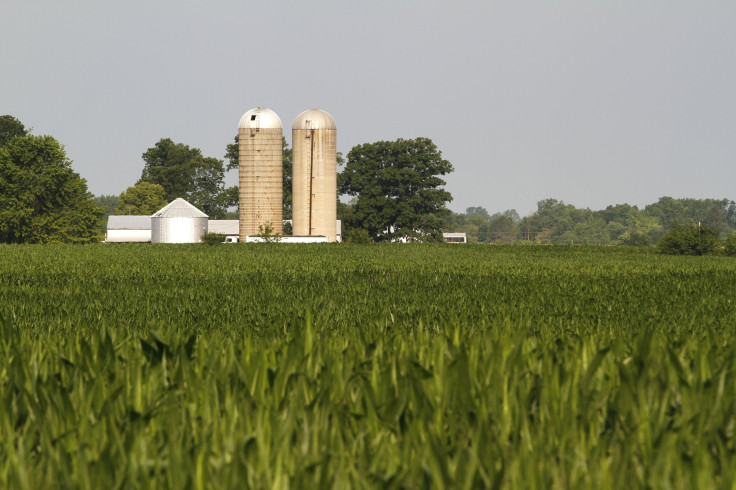Less Ethanol In Gasoline: EPA Reduces Ethanol In Gasoline Mandate; Corn Lobby, Agribusiness Stung By The Decision
Column

One of Washington’s longtime behemoths got its comeuppance late last week. Finally.
Here’s how it happened. Eight years ago a number of big corporate farmers and corn processors -- like Decatur, Ill.-based Archer Daniels Midland Company (NYSE:ADM), Sioux Falls, S.D.-based POET and Green Plains Renewable Energy, of Omaha, Neb. -- convinced Congress to pass the Energy Policy Act, which mandated that gasoline refiners use 4.7 billion gallons of ethanol and increase that amount annually to the nation’s total gasoline pool, which last year amounted to 134 billion gallons. The stated purpose was to reduce both greenhouse gas emissions and dependence on foreign oil. However, in reality, it meant a huge new market for corn-based ethanol, making agribusinesses that grow and process the commodity very happy.
But that wasn’t enough. In 2007 that same alliance compelled Congress to pass the Energy Independence and Security Act, which gave the EPA the authority to increase the amount of ethanol blended into gasoline to as much as 36 billion gallons annually by 2022.
As a result, every year since the measure was approved, the EPA has driven up ethanol requirements; today U.S. gasoline contains 10 percent ethanol, which this year will translate into an estimated 13.8 billion gallons of ethanol.
Since the passage of the original bill, opponents of the ethanol mandate have denounced the policy as corporate welfare, a wasteful, destructive and unnecessary gift to a narrow group of big farmers, multinationals and the corn lobby’s Washington patrons, like Sen. Charles Grassley, R-Iowa:
· Environmental groups like Friends of the Earth argued that ethanol gasoline actually contributes to global warming and habitat ruin because vast amounts of water and native grasslands are needed to produce it;
· Oil companies produced a study, conducted by NERA Consulting Group, that said the current ethanol mandate will result in a $770 billion decline in gross domestic product;
· Anti-hunger groups charged that ethanol production substantially reduces corn inventories, raising global food prices for the world’s poor;
· Automotive groups warned that, given declining U.S. gasoline demand and engine damage from using gasoline with more than 10 percent ethanol, the scheduled 2014 increase in ethanol levels will mean all gasoline will have more than the safe level (10 percent) of ethanol;
· Energy analysts, including the Department of Energy, noted that the U.S. shale oil boom has already made the nation a petroleum product exporter and is expected to end American dependence on foreign oil within a few years.
Ultimately, the weight of the evidence produced by ethanol foes was persuasive. Late last Friday the EPA stunned America’s corn interests by not only refusing to increase the ethanol mix, which is 16.55 billion gallons for this year, but also proposing to actually cut the mix to 15.21 billion gallons for next year. That’s 14 percent lower than Congress originally envisioned.
“In the years between when Congress created that program and today, production of renewable fuels has grown rapidly,” Janet McCabe, acting assistant administrator, wrote in an agency blog. “But at the same time, fuel economy improvements and other factors have pushed gasoline consumptions far lower than what was expected.”
Not surprisingly, ethanol’s backers responded immediately and bitterly.
“The relentless campaign to discredit ethanol undermines America’s longstanding efforts to diversify its energy landscape, fuel the economy and strengthen national security,” Grassley said Friday in a news release.
“The predictable efforts to smear ethanol’s reputation ignore the renewable fuel’s valuable contributions to clean energy, rural development, job creation and U.S. energy independence.”
One of the corn industry’s trade groups, the Advanced Ethanol Council, added that it was disappointed at the “unnecessary reduction” in the mandate.
“This is the first time that the Obama Administration has shown any sign of wavering when it comes to implementing the Renewable Fuel Standard,” said Brooke Coleman, executive director of the Advanced Ethanol Council.
Sometime in the first half of next year, after reviewing material submitted during a 60-day comment period, to its ethanol proposal, the EPA will issue a final rule. But if, as expected, the EPA holds to its proposal, analysts expect that corn prices will head sharply south as demand for the commodity declines. Indeed, even if the EPA wavers, prices will likely fall steadily.
“Fuel production now takes up around 40 percent of the U.S. corn crop,” London-based Capital Economics wrote four days before the EPA announcement. “The increasing efficiency of vehicles and continued weak economic growth in the U.S. should reduce the amount of gasoline used. And given that U.S. refineries refuse to produce petrol with more than 10 percent ethanol for fear of damaging vehicle engines, this should reduce demand for ethanol and in turn lower demand for corn.”
It’s taken nearly a decade, but ethanol opponents may soon be able to claim Mission Accomplished. None too soon, by my reckoning.
© Copyright IBTimes 2024. All rights reserved.






















